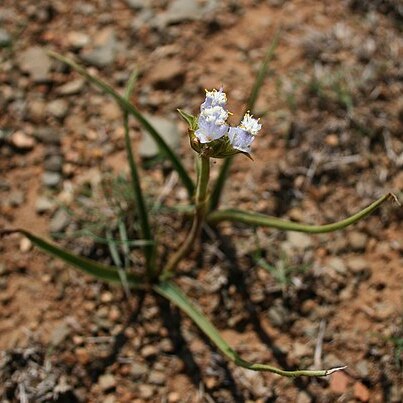Perennial herb, 0.10-1.35 m high; basal shoots form a cluster of ± decussate leaves and erect stems; all shoots enclosed in tight sheaths, purple when young; rhizome well developed, U-shaped, older parts dying; stem covered with white hairs. Leaves linear, acuminate, 170 x 8 mm, canaliculate; adaxial surface glabrous, abaxial surface with long, white, patent hairs. Inflorescence a cyme. Flowers: pale to deep blue or mauve. Flowering time June-Mar. Fruit an obovoid capsule, hairy at apex.
Perennial herb, up to 500 mm high; solitary or few together; pubescence of short, patent hairs. Rhizome vertical to U-shaped, with hard, terete roots. Stems with erect, fertile shoots. Leaves 5, subdecussate; blade linear, ± 170 x 8 mm, upper surface glabrous, lower surface clothed with long, patent hairs. Flowers: regular, usually in 4-6-flowered clusters, widely spaced; petals ± 10 mm long, pale to deep oriental blue or mauve; filaments densely bearded; Oct.-Feb.
A herb. It keeps growing from year to year. The leaves are in rings near the base. They are 20 cm long and 1 cm wide. The flowering stems are slender and 60 cm long. The uppermost leaves on these stems have dense compact flowers in their axils. The flower petals are violet or blue. The anthers are right yellow.
Perennial herb, up to 500 mm tall. Fertile shoots erect, usually with 4-6 flower clusters widely spaced. Rhizome vertical to U-shaped. Roots terete, hard. Pubescence of short, patent hairs. Flowers pale to deep oriental blue or mauve.
Tufted, spreading, hairy perennial, 15-50 cm, rhizome geniculate. Leaves lanceolate, hairy beneath. Flowers blue to mauve.

